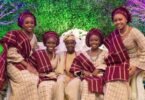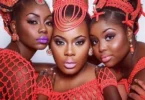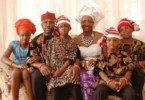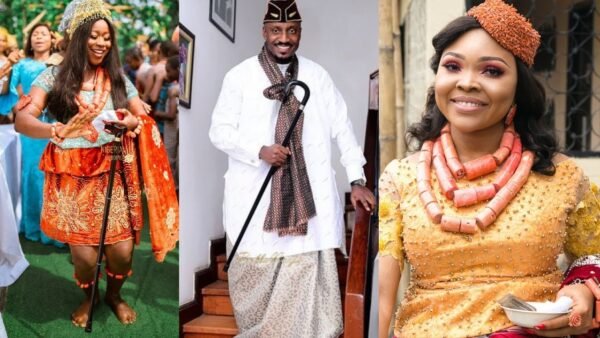
The Ijaw people are among the popular ethnic groups of Nigeria with remarkable culture and tradition, fashion, etc. Located again in the Nigeria Delta Area, the Ijaw people have come out with their own style that represents them, their ways and their surroundings. Labelled from their fabulous apparel to their beautiful ornaments, the fashion of the Ijaw kingdom today is people’s pride and extraordinary art.
In this article, I explain how Ijaw fashion is distinctive, what its history is, and what function it serves in highlighting Ijaw heritage.
1. Traditional Attires: A Symbol of Identity
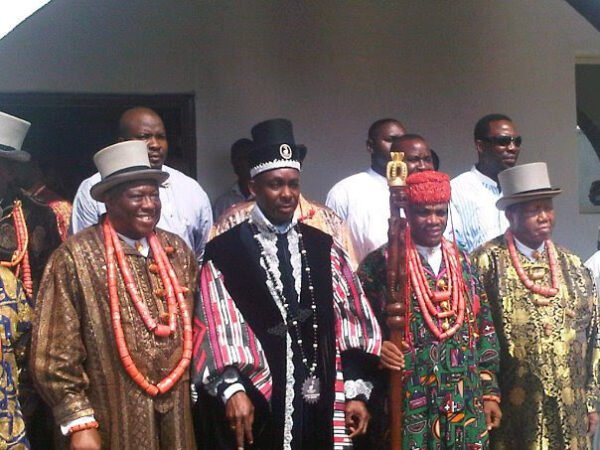
The traditional costume of the Ijaw is associated with their environment and has important cultural meaning. Given that these people dwell in water bodies, especially riverine regions their dressing is characterised by the use of light clothes appropriate for the hot and swampy environment. They, however, are anything but mundane, since they come in bright colours and elaborate patterns and even signify occasions, status, and cultural affiliation.
a. George Cloth
Arguably, the most memorable part of Ijaw clothing is the George, a fibre fabric ordinarily worn as wrappers and headcaps. This is a fabric that was initially brought from India and has found its way to be locally adopted amongst the Ijaw people and is common with them. It is occasion wear and favoured, particularly during festivals, traditional weddings, and other marriages amongst the Allada peoples of Togo.
b. Men’s Traditional Wear
Today, Ijaw men do dress smartly in grinded, flowing materials or smart shirts and the George wrappers are worn at the waist. Worn usually as formal shirts, they have beautiful embroidery on the material and come in very bright colours often on long sleeves. Toward this end, items such as the hat-most preferably the bowler or a walking stick also imply dignity/respect.
c. Women’s Traditional Wear
Ijaw women are equally fashionably dressed, wearing George wrappers with matching beautiful embroidered blouses or tops. With headwear, headwrap usually matches the outfit and is tied, normally in impressive ways. These ensembles are beautiful and timeless pieces, representing the beauty and strength of Ijaw women.
2. Adornments and Accessories
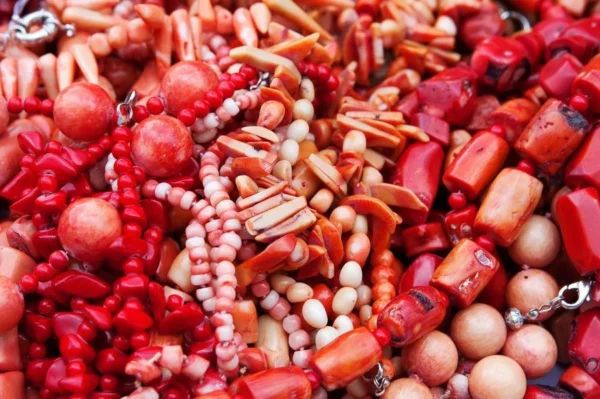
In the case of Ijaw clothing, accessories are diverse and multitalented since they add beauty as well as cultural value to the dressing style. There are frequently fashions, accessories, and home decorations often handcrafted, reflecting the abilities of the community members.
a. Coral Beads
Ijaw people staple precious stones such as coral beads as adornments, which represent wealth, royal authority, and prestige. They are used as necklaces, bracelets, anklets, and by sewing them into clothes. Brides and chiefs in artistic ceremonies wear coral-beaded ornaments that give them an authoritative royal-looking dress.
b. Headpieces and Crowns
Among the fascinating accessories that I will associate with Ijaw women for ceremonial occasions are beaded or fabric headbands or gold ones. Although these headpieces are ornaments, they also represent the event in question. appearing in ceremonies, chiefs and traditional rulers also wear crowns or conspicuous hats emblematical of their office.
c. Shells and Sea-Inspired Accessories
Because the Ijaw people live close to water bodies, some of the trinkets they incorporate into their belts include cowrie shells and sea motifs. These decorations make them feel associated with their environment and are a constant socially cultural representation of their origins.
3. Cultural Significance of Colors
Colors hold deep meanings in Ijaw fashion, with each hue representing different aspects of life, emotion, or status. For instance:
- White: White is associated with innocence, no violence, and divinity. Pure white clothes are usually adorned during sacred rituals or formal events, or any time evidence of humility is required from an individual.
- Red: Red stands for power, bravery, and energy. It is a dominant colour we find during festivals and ceremonies that are so symbolic of the Ijaw people.
- Blue and Green: Reflect the community’s connection to water and nature, symbolizing tranquillity, prosperity, and renewal.
The combinations of the colours in their dress indicate the extent to which the Ijaw people appreciate the symbolism and how they are willing to tell their cultural stories through their fashion fabric.
4. Festival and Ceremonial Attires
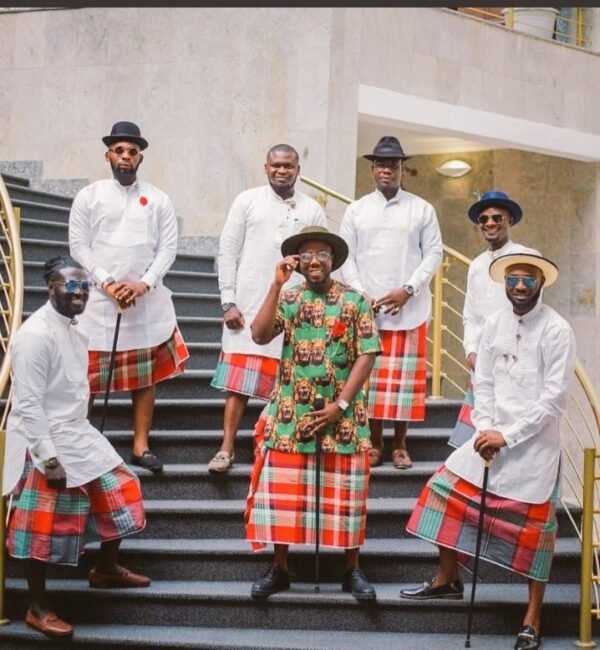
Ijaw festivals and ceremonies are bothersome orations of music, dance, and fashion. During such occasions, the people declare themselves in their best regalia, transforming the festivals into fashion events.
a. Egbesu Ceremonial Attire
Ceremonial fashion is impacted by the Egbesu deity considered the god of Ijaw people. Believers dress in simple white clothes with embroidered designs that are associated with followers of the faith, and its leaders carry special amulets. This clothing is usually in combination with palm fronds, beads, and face painting.
b. Traditional Weddings
Ijaw traditional weddings are colourful to the extent that everybody, the bride and the groom, especially wear fashioned traditional clothes. Selected adornments include coral beads, a blouse embroidered ornately, and even the wrapper is multiple-layered. For the bride, the groom accompanies her with a shirt and a wrapper with a captivating design on the headwear, a hat.
c. Festivals
Events such as the Seigbein festival also have people dancing in appropriate costumes, masks, and other regalia that portray the Ijaw (myths) and traditions. These apparels are, most of the time, individually produced and every single garment has a thing or two to utter about the community and its triumphs.
5. Modern Influences and Adaptations
Although the elaborate cut and style of the dress are completely traditional to the Ijaw people of Nigeria today, there seems to be a change in trend with the introduction of the world’s most popular cuts in fashion today. Some of the new generation designers in the Niger Delta have started modifying their Ijaw traditional wear with clothes that would suit the youthful generation with real Ijaw design.
a. Fusion Styles
Today, these traditional attires are endowed with modern modes of dressing, sharply incised by the Ijaw fashion, where materials like George are incorporated into other beautiful dressing styles that are familiar to the Western world. For example, George fabric is now used for formal occasion wear such as gowns, jumpsuits, and tailored suits, among others.
b. Fashion on the Global Stage
Modern fashion, especially the custom-made ramp, has incorporated Ijaw-inspired work with designers, embracing the beauty of their roots. These have gone a long way in creating awareness of the Ijaw people and their respective cultural imprints.
6. The Role of Fashion in Ijaw Identity
It is just not the clothing that the Ijaw people wear but a statement that is part of their identity and narrative. Every dress represents identity, genealogy, and ethos and allows the wearer to engage with her or his heritage and culture. Clothing is also a solidarity wine, which comes out during festivals and ceremonies where the spirit of culture reigns supreme and all Ijaw people come together.
Moreover, defining Ijaw clothing and ornaments with masterful craftsmanship and intricate design clearly explains the inventiveness of the Ijaw community. About weaving techniques, embroidery, and beadwork, the Ijaw continue to promote traditions and propose them as something alive and valuable to future generations.
Conclusion
The special dress code that is peculiar to the Ijaw community of the kingdom is an indication of the historical antecedent, artistic, and self-sufficiency of the people. Everything the Ijaw people wear, every ornate piece they adorn their body with, and every bit of colour they incorporate in their clothing is an avenue to promote the unique history of the people, their environment, and even their spirituality. With the world changing at the rate that it is today, one can well imagine the influx that new styles have brought about the traditional style of dressing that still stays true to the Ijaw without losing an iota of its essence.


